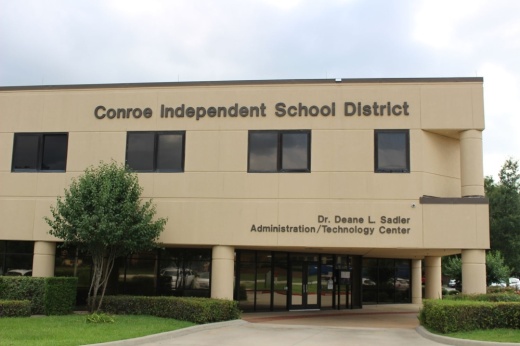Preliminary results of the spring State of Texas Assessments of Academic Readiness, or STAAR, exams show a decrease in the percentage of Conroe ISD students approaching grade level this year compared to 2019. The results were released in June by the Texas Education Agency and Data Interaction for Texas Student Assessments.
CISD scores mirror the trends of the scores for Texas as a whole. The percentage of students in CISD who approached grade level in the exams was less in 2021 than in 2019 for each STAAR test except for the English end-of-course exams in English I and II. The percentage of students in CISD who approached grade level in the English EOCs was, on average, 3% more than 2019.
The percentage of third- through eighth-grade students who approached grade level in the 2021 math exam was 7% lower than the 2019 percentage. Seventh-grade students had the largest decrease in the percent of students approaching grade level in the math exam with a 16% decrease from 2019 scores.
CISD said in a statement that in-person classes for the 2021-22 school year will help recover learning loss associated with COVID-19.
“Conroe ISD is currently in the process of closely analyzing the STAAR results and determining plans of action to address learning gaps," according to the statement. "Throughout the 2020-2021 school year, our teams of administrators and teachers worked diligently to minimize any learning loss as a result of COVID-19. We are proud that we had the highest in-person learning percentage among large districts in the state with 84%, or over 55,000, of our students attending class in person. Although we know we have much work to do, we believe opening our schools at the beginning of the year and being able to keep them open throughout the year played a significant role in our students’ learning outcomes.”
CISD will be using ESSER funds to address learning loss, district officials have said. The funds are expected to go toward after-school tutorials, summer school, targeted small groups and summer enrichment, according to information from the district. In addition, district officials have said there is a desire for added technology, mobile connectivity, academic interventionists, behavioral support and online learning as ways to recover learning.
“We not only want to recover lost learning, [but] we don’t want to look up and see gaps re-emerging with our kids. We don’t want to find out in three or four years from now that our most at-risk students are not taking upper-level courses because they got behind during the pandemic,” CISD Deputy Superintendent Chris Hines said at a June board of trustees meeting.





